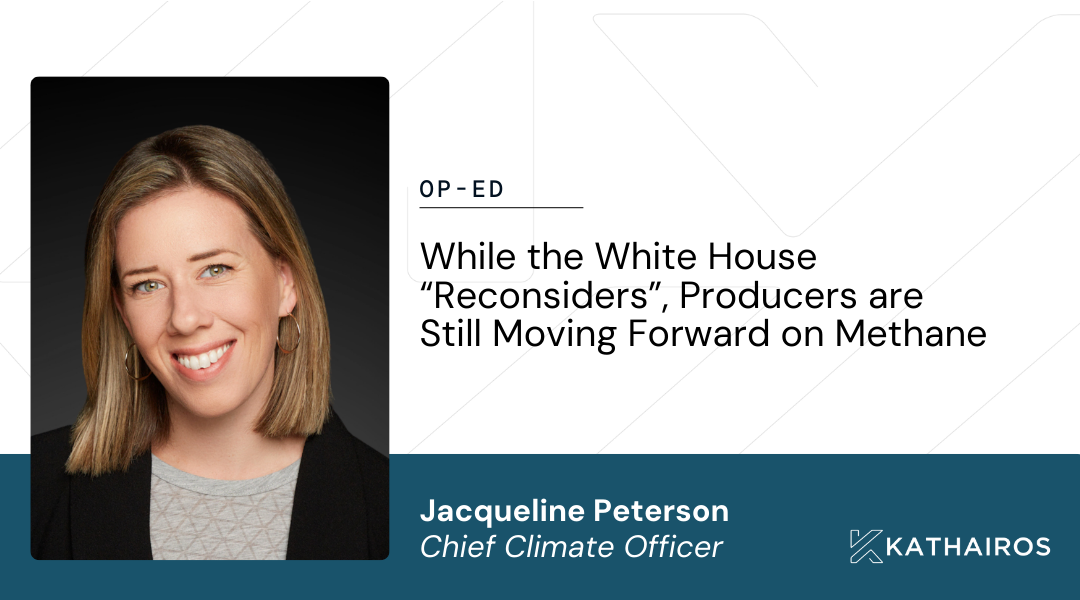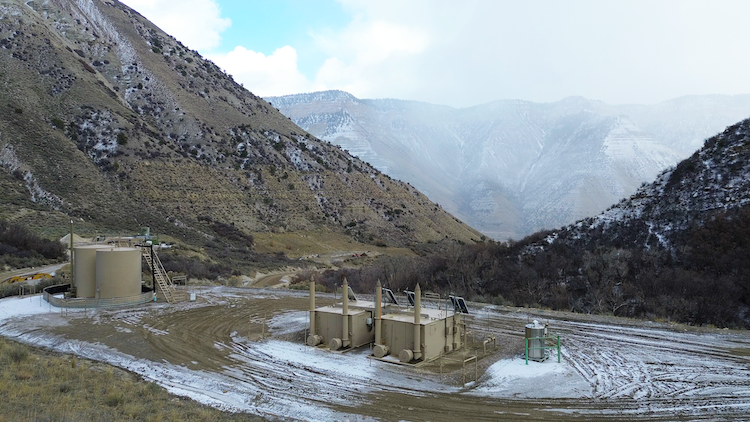
Kathairos has emerged as the leading North American solution for methane elimination from pneumatics, with more than 1,000 systems in operation across North America and over 40 major oil and gas producer partners.
In this post
Every 24 hours, wind generates enough energy to produce nearly 35x the amount of electricity that the global population currently uses in a single day.
As a renewable resource, harnessing wind energy will be crucial in the shift towards a greener, decarbonized future.
The key to tapping into the endless potential of wind?
Well, it’s something so simple that humans have used it for as long as we’ve had agriculture.
THE WIND TURBINE
The principles of wind energy come down to a very simple mechanism: a series of sails or bladed mounted around a central rotor catch wind and convert its kinetic energy into rotational energy.
Traditional windmills take advantage of this energy conversion to grind wheat or pump water, but modern wind turbines take it a step further by using the rotational energy to turn a generator, which in turn creates electricity.
Three main factors determine just how much energy wind turbines can produce: blade size and orientation, blade design and the amount of wind turning the rotor.
FIRST THINGS FIRST: THE AXIS
Wind turbines can be designed with their rotor on a vertical axis or a horizontal axis, with each orientation having its own set of advantages and disadvantages.
Because of the way they are arranged, vertical blades can pick up wind coming from any direction without any adjustment.
While the simple design of the blades makes them very easy to monitor and maintain, these blades are significantly less efficient than horizontal axis blades, due to higher drag.
Horizontal designs allow blades to capture the wind’s full force by tracking the wind’s direction and turning to face it, a process known as yawing.
Traditional windmills achieve this through manual monitoring, but modern wind turbines are equipped with wind sensors and computer systems that automatically adjust the blades to capture as much energy as possible.
THE PRINCIPLES OF BLADE DESIGN: LIFT AND DRAG
Outside of rotor orientation, the blades themselves need to be precisely shaped in order to maximize their efficiency in capturing wind energy.
Early flat blades have long since been replaced with blades curved like airplane wings. The reason? Wind travels faster over the curved surfaces, creating something known as lift, or low-pressure pockets above the blades that forces them upwards.
Since lift is also dependent on the angle at which wind is moving relative to the blade, modern turbine blades are also designed with a twist, optimizing how much of the blade can cut into the wind.
Think of how you put your hand out of the window of a moving car: much like how you turn your hand to “ride” the wind, the contoured blades help turbines cut through the wind, allowing them to effectively harness wind and convert its kinetic energy into rotational energy.
Most blades are made of fiberglass and resin layers, making them durable enough to withstand most extreme weather conditions and remain operational for over 20 years.
UP, UP AND AWAY: MAXIMIZING WIND ENERGY
Even with horizontal rotors and aerodynamic blades, wind turbines can only capture wind in sufficiently windy environments. Because of this, most turbines are built to be well over 100 meters tall with equally large rotor diameters, due to wind speeds typically increasing the higher into the atmosphere you go.
A singular turbine of this height and size by itself can capture significant amounts of wind, generating enough electricity every year to power over 700 homes.
Offshore wind farms are also commonplace and contain an even greater number of even larger turbines, due to more wind availability in these environments. The largest wind turbine in the world was built off the coast of the Netherlands in 2019. with a rotor diameter of 220 meters. This turbine alone can meet the annual power needs of 16,000 European households.
WHERE WE GO FROM HERE: THE FUTURE OF WIND
While wind may be a free and unlimited power source, there is a mathematical limit to how much wind a turbine can convert into electricity, no matter its efficiency or size. Since some wind must remain to keep the blades spinning, a turbine can only ever be 59.3% efficient.
Several other problems exist for wind, including some opposition due to how turbines disrupt natural sceneries and how wind’s intermittent availability makes it difficult to incorporate into electrical grids.
Even with these challenges, modern wind turbines have made wind energy one of the most efficient and inexpensive sources of electricity.
Turbines already provide essential energy for many communities around the world, and for many farmers, hosting wind turbines provide a reliable source of supplementary income.
With continued improvements in wind forecasting, electrical grid infrastructure and energy storage technologies… who knows? Wind power just may eventually blow away all of our energy problems.
Explore more posts from Kathairos
.jpg)
Decarb Digest, Issue 01: Discover Why Energy Leaders Aren’t Waiting on Washington

Op-Ed: While the White House “reconsiders”, producers are still moving forward on methane

